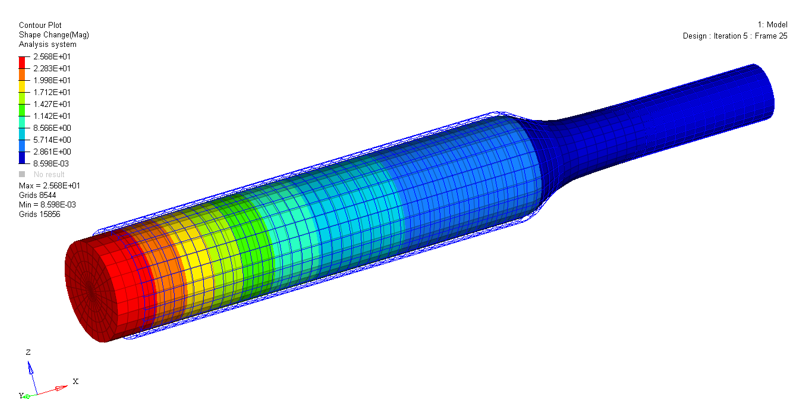OS-E: 2010 Dang Van Fatique (Factor of Safety) Optimization
Used to predict if a component will fail in its entire load history. In certain physical systems, components may be required to last infinitely long.

Figure 1. Forces and Moments Applied on the RBE2 Element . The opposite end is fixed using SPC
For example, automobile components which undergo multiaxial cyclic loading at high rotational velocities (like propeller shafts) reach their high cycle fatigue limit within a short operating life. The conventional fatigue result that specifies the minimum fatigue cycles to failure is not applicable in such cases.
It is not necessary to quantify the amount of fatigue damage, but just to consider if any fatigue damage will occur during the entire load history of the component. If damage does occur, the component cannot experience infinite life. Fatigue analysis based on the Dang Van criterion is designed for this purpose. For further information, refer to Dang Van Criterion (Factor of Safety) in the User Guide.
Model Files
Refer to Access the Model Files to download the required model file(s).
The model file used in this example includes:
Shaft_FOS_opt.fem
Model Description
The objective is to conduct a Dang Van Fatigue optimization (Factor of Safety) for the shaft with Shape Optimization. There are four shape design variables with corresponding upper and lower bounds. Force and Moments are applied on the RBE2 element and the other end of the bracket is fixed at all degrees of freedom (Figure 1).
Any FOS value greater than 1.0 implies that the component satisfies the conditions for infinite life. The lower bound for FOS constraint is set to 1.0 via the DCONSTR entry. Additionally, Displacement constraints are applied on node 15856 with an upper bound of -5.0 in translational Z direction.
- Element Types
- CHEXA
- Property
- Value
- Young's Modulus
- 70000.0
- Poisson's Ratio
- 0.334
- FOS
- Tfl = 400.0
- Shape Optimization
- DESVAR
- Constraints
- DISP
- Objective
- MASS
Results

Figure 2. Topology Optimized Structure